New 2023 Deviate Highlander 2 first ride review – High pivot beauty from the Highlands
With the Deviate Highlander 2, the Scottish high-pivot specialist has released the second iteration of their trail all-rounder, which combines a 160mm fork with 145 mm of rear travel. In typical Deviate fashion, the new Highlander looks pretty lush! But how does it perform away from its homeland in the cold, wet Highlands?
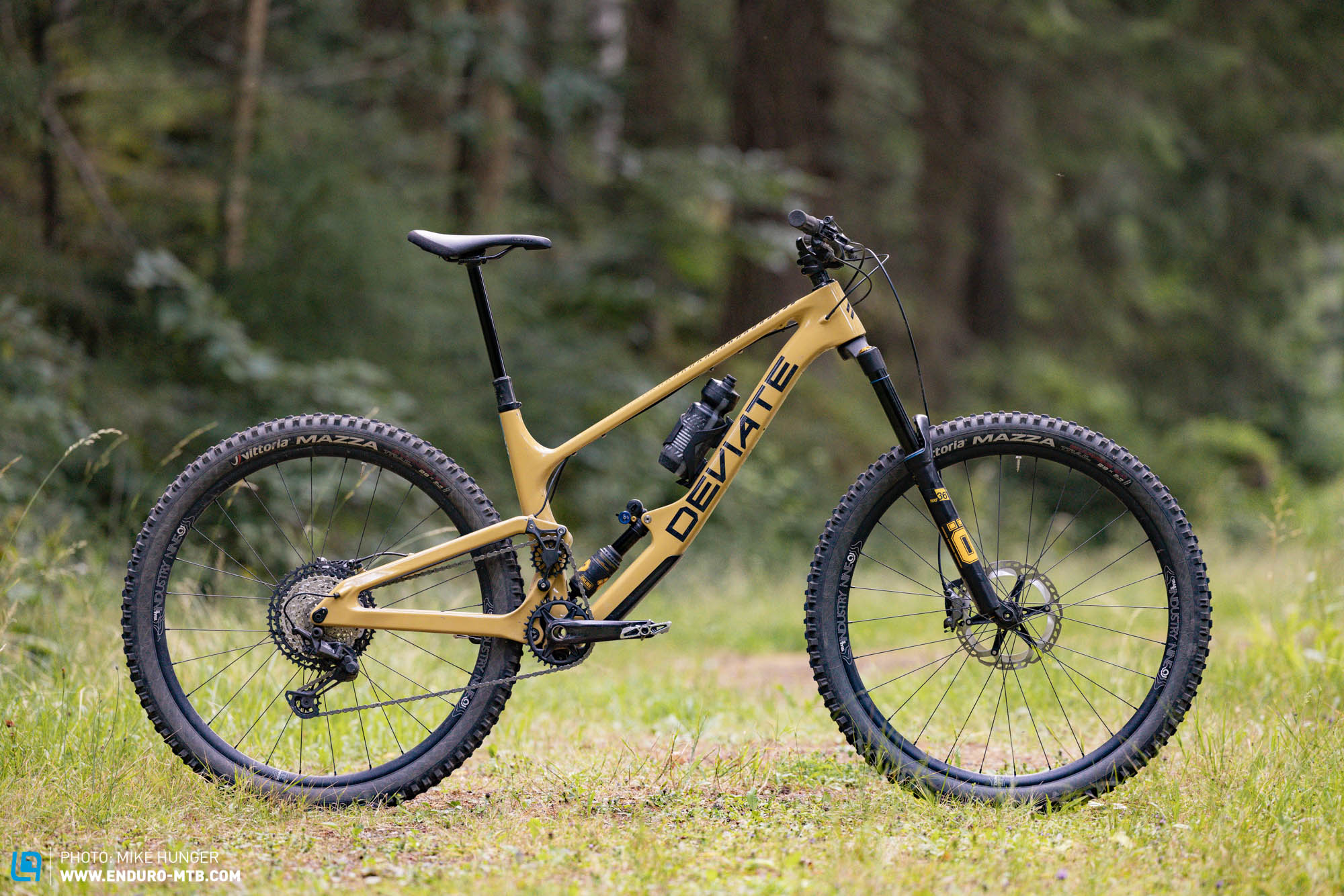
Whenever the “Highlander” word drops, we can’t help but think about Mel Gibson swinging swords and rolling around in the mud in a kilt… not a good look! However, the Highlander we’re talking about is Deviate’s latest trail bike, which is the exact opposite of ugly and rolls into the 2023 season in its second iteration. The latest creation of the Scottish boutique manufacturer combines 160/145 mm of travel and replaces the current Highlander model which featured either 140 or 150 mm of bounce. Following the “Any trail. Any time” motto, the 14.5 kg trail bruiser should be able to handle anything you throw at it, from laid-back home trails to epic bike park laps. Retailing at € 8,835, the Highlander 2 is the versatile all-rounder in Deviate’s portfolio.
Deviate and high pivot bikes – Pioneers, not copy cats!
Deviate have been exclusively building high pivot bikes since 2016 and were amongst the first manufacturers to implement the concept, starting with their debut bike, the Guide. In other words, the Scots aren’t just jumping on the bandwagon but are actually one of the pioneers of high pivot suspension design. But what’s all the fuss? The clue’s in the name! Unlike with conventional suspension designs, the main pivot sits well above the top of the chainring, allowing the rear wheel to swing up and backwards during an impact. This rearward axle path can help the suspension feel smoother over square-edged hits, ironing out roots and rocks more efficiently. But there’s also a downside to the system: as the axle moves rearwards through the travel, the distance between the cassette and chainring grows, resulting in wheelbase and chainstay growth. This pulls the chain backwards, manifesting in high levels of pedal kickback and resulting in an imbalanced weight distribution of the rider on the bike throughout the travel. That’s where the chain idler pulley on the seat tube comes into play, minimising pedal kickback and giving high-pivot bikes their characteristic look. In our Suspension-Voodoo article .
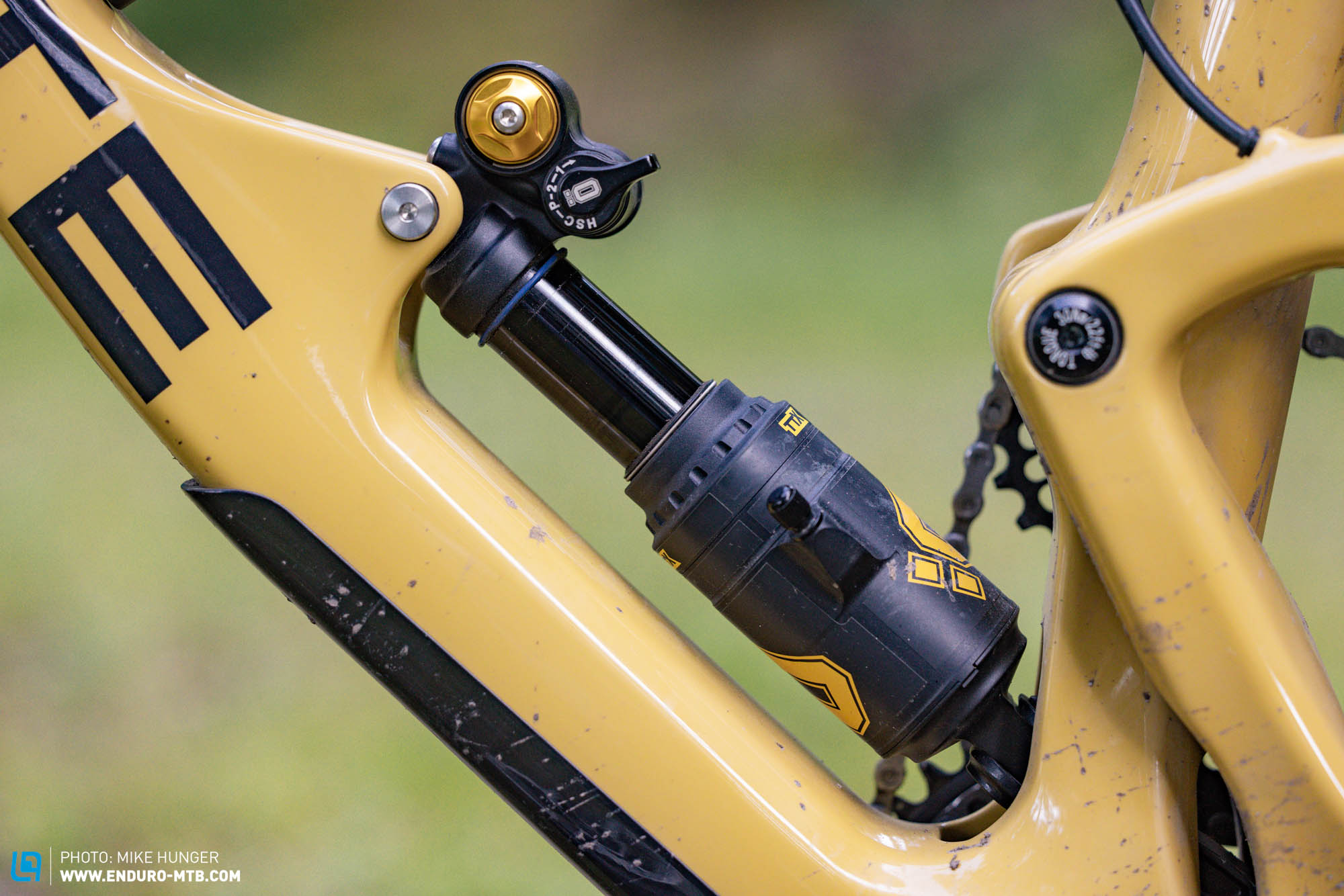

Drool-alert – The Deviate Highlander 2 2023 in detail
At the heart of the new 2023 Deviate Highlander 2 lies a full carbon frame. Its harmonious silhouette is extremely elegant and relies on organic, proportionate lines that make it neither too square nor too rounded, ensuring a rather discreet look. The Highlander 2 is available in two finishes called Blue and Isla Sand, both of which have a zebra pattern on the top tube that is inspired by the brand’s stripy logo. The grease ports on the frame bearings and idler pulley are a clever feature, especially if you ride through the Scottish winter, making it easy to lubricate the bearings to prolong their service life.
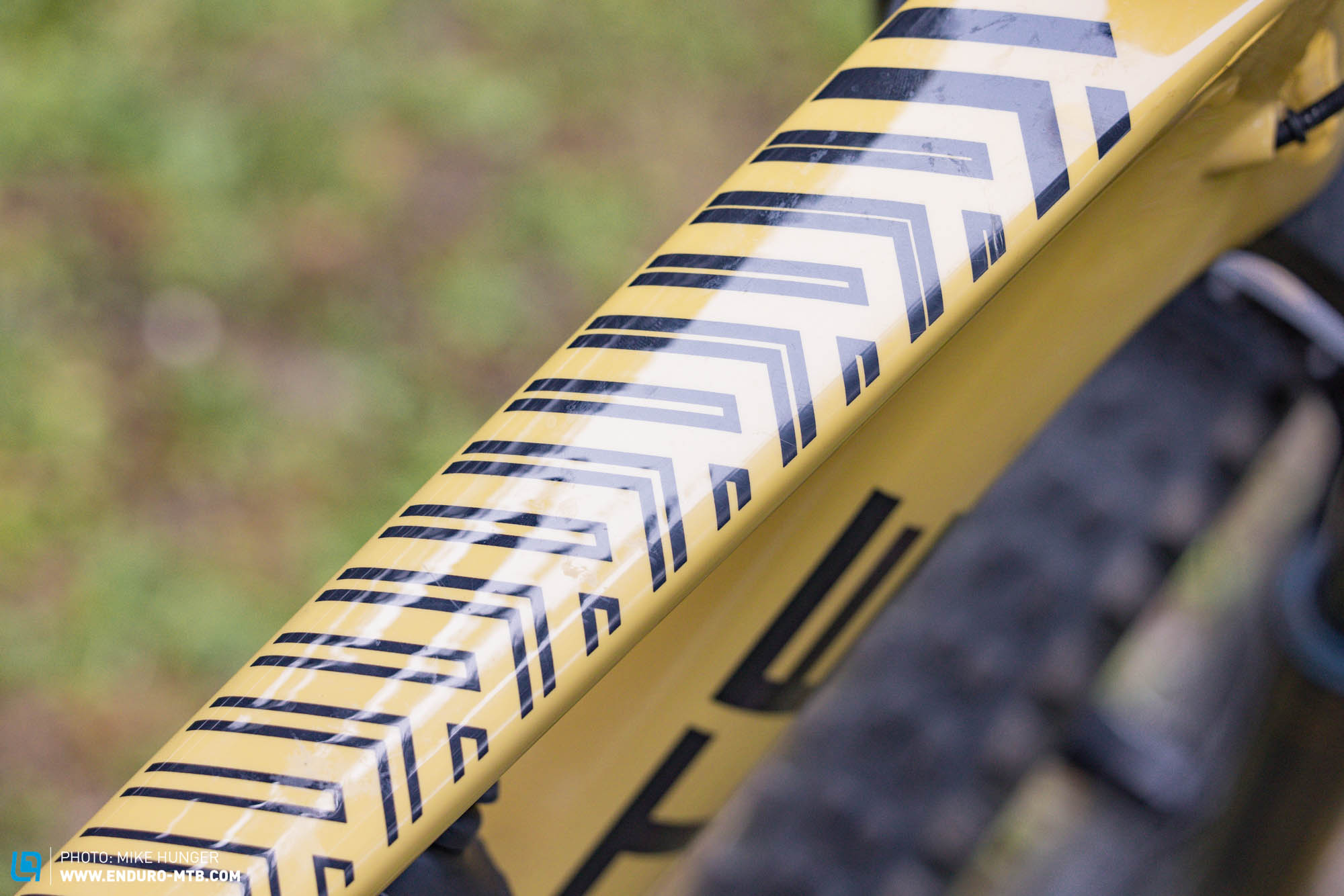
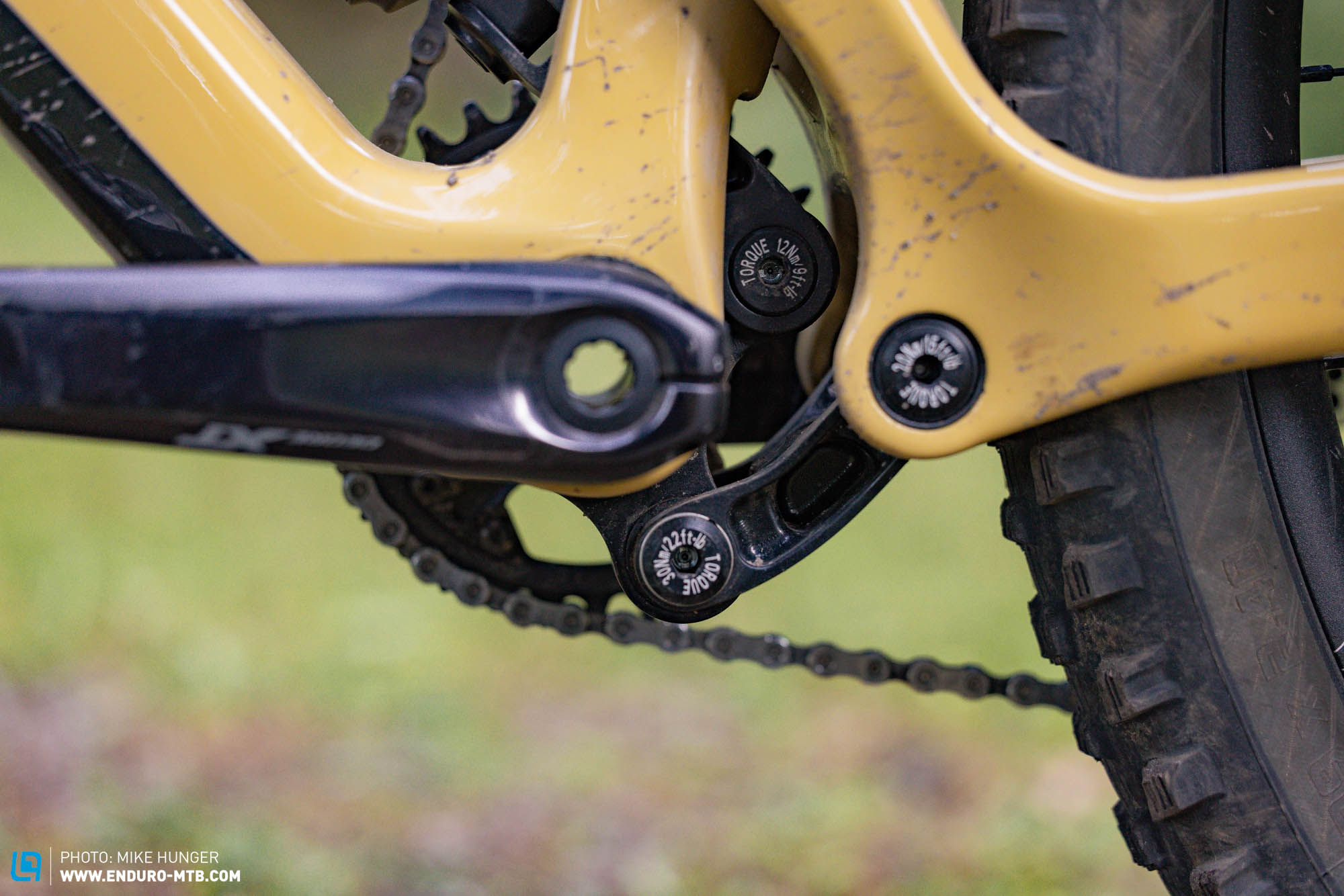
A bolted carbon protector shields the down tube from stray rocks and nasty impacts. Given that the idler pulley moves the chain close to the bottom of the drive-side seat stay, the Highlander relies on a seat stay protector rather than a conventional chainstay protector. While this is basically just a strip of mastic tape, it does its job well, preventing chain slap and paint chips. The alloy bracket supporting the 18 t idler is neatly integrated into the frame and fits well into the overall picture.
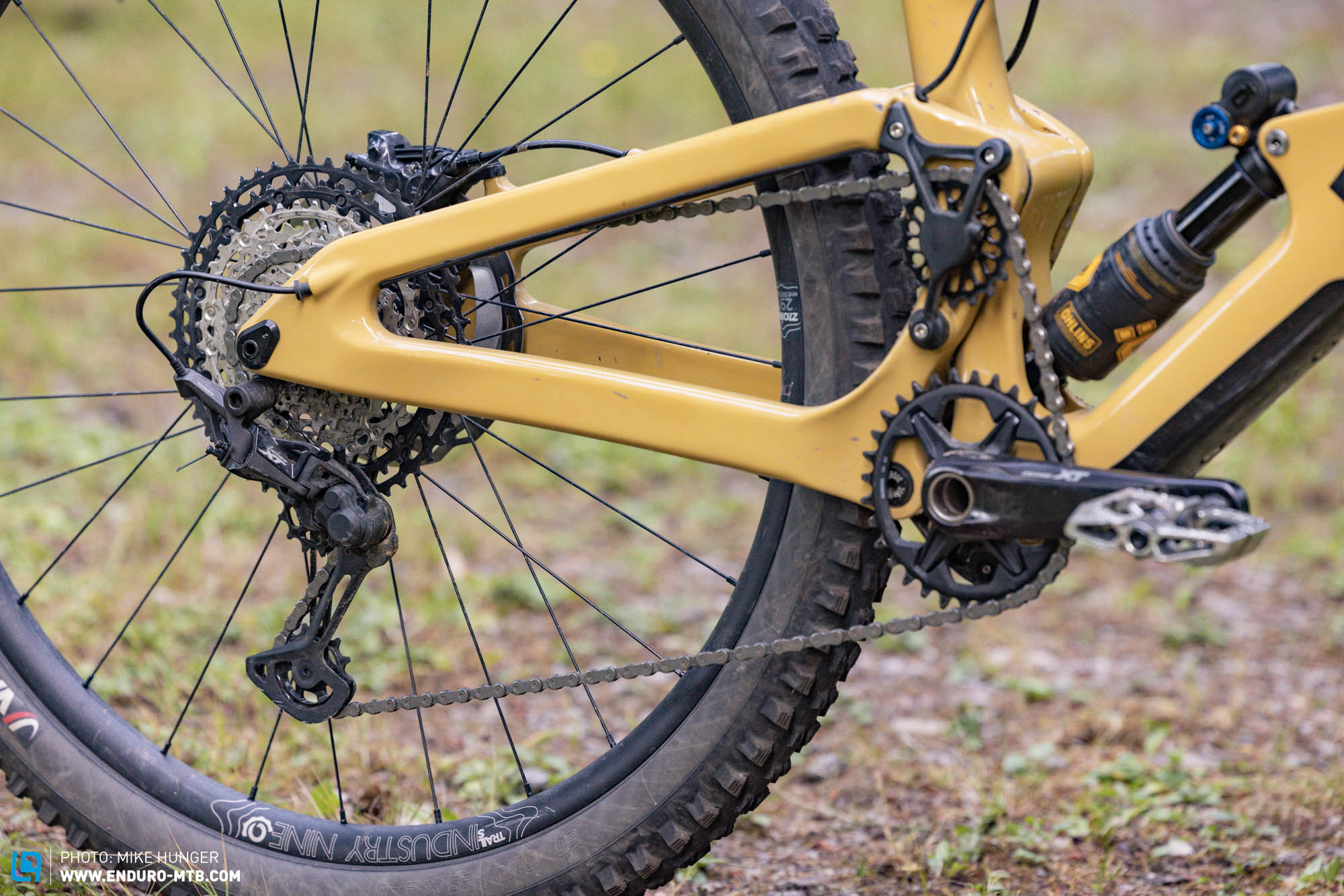
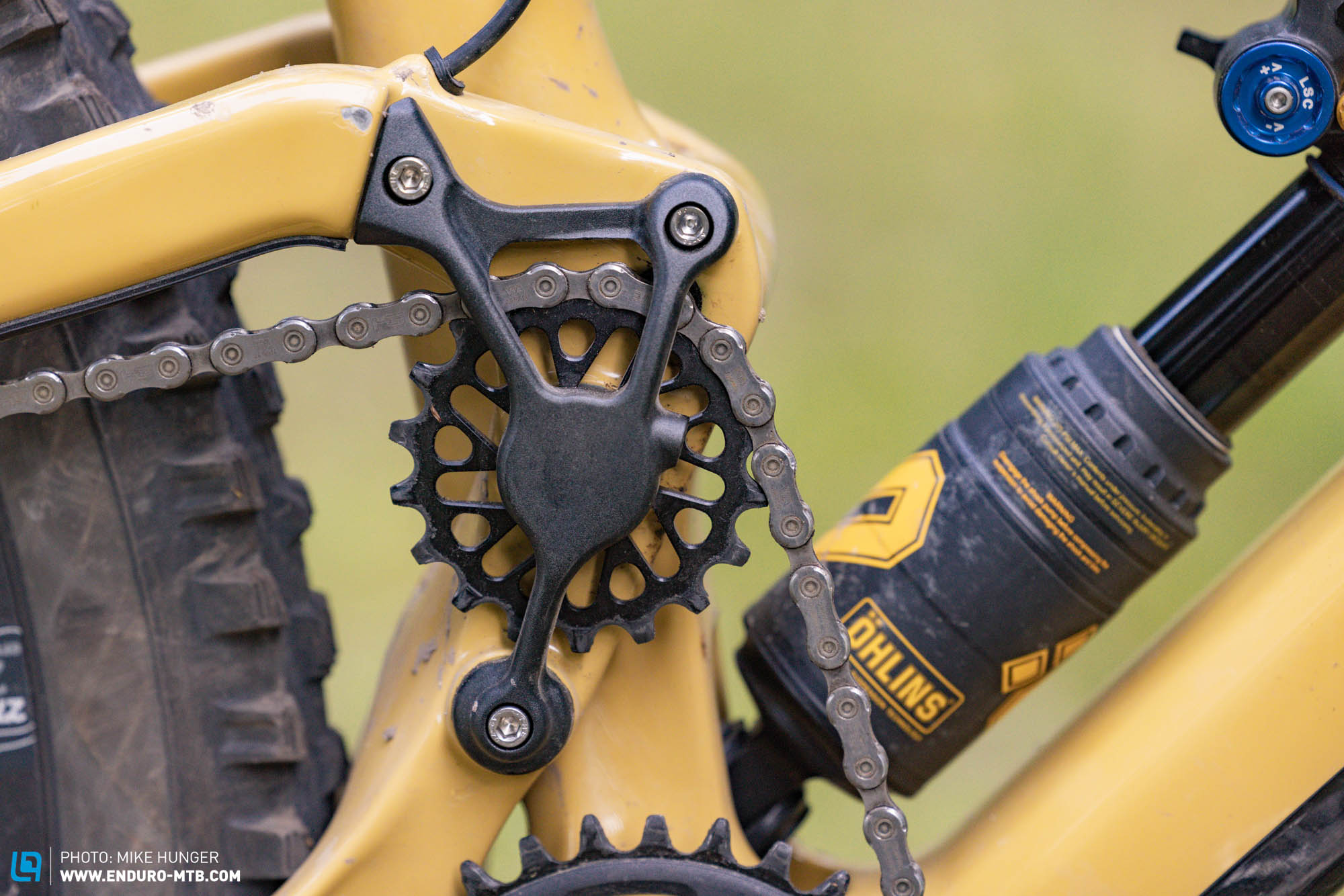
The cable routing is a wild mix of internal and external routing. The dropper post cable disappears into the frame through the headset, while the rear brake line and shifter cable are tucked away inside a recess in the top tube, and secured with four cable clamp bosses that also double as a tool mount. Together with the bottle cage mounts, this makes for a total of three mounting points on the frame – awesome! However, on the swingarm, the two cables disappear into the seat stay, meaning that on-the-fly rear brake swaps are still not an option despite the external cable routing on the main frame triangle – we’re not really sure why Deviate opted for a mixed cable routing system!
How to get hold of your 2023 Deviate Highlander 2
There are two ways to get your hands on a Deviate Highlander 2. Either you order the frameset directly from their website (with or without shock) and build your bike yourself, or you configure your dream build using Deviate’s online configurator, which is both extensive and intuitive to use. Not only does their bike builder offer a wide range of components but also gives you plenty of useful information for each product. If you choose the second option, however, you should bear in mind that Deviate’s configurator doesn’t allow you to order the bike directly from the website. Instead, the Scottish team will forward the desired configuration to your nearest authorised Deviate dealer, who will then send you a final quote or suggest changes in case some of the parts chosen aren’t available. Furthermore, the dealer will be able to give you personal advice and answer all your questions regarding your build. Unfortunately, Deviate’s dealer network is still small, which makes it harder to source their bikes – at least until they decide to offer some pre-configured builds.
Swedish-Japanese alliance – The spec of our 2023 Deviate Highlander 2 test bike
For this test, Deviate sent us a custom build that reflects their idea of the optimal spec. The result is an ensemble of Swedish-Japanese goodness. Scandinavian suspension specialist Öhlins supply the RXF 36 M.2 fork and matching TTX2 Air shock. The fork features two self-equalising air chambers in the main spring, with a ramp-up chamber allowing you to adjust the progression of the fork infinitely without having to use volume spacers. Mercifully, there’s a sticker with recommended pressure settings on the stanchions to help you get started. Both the fork and shock allow you to adjust the high speed and low speed compression damping as well as the rebound, without the need of tools.
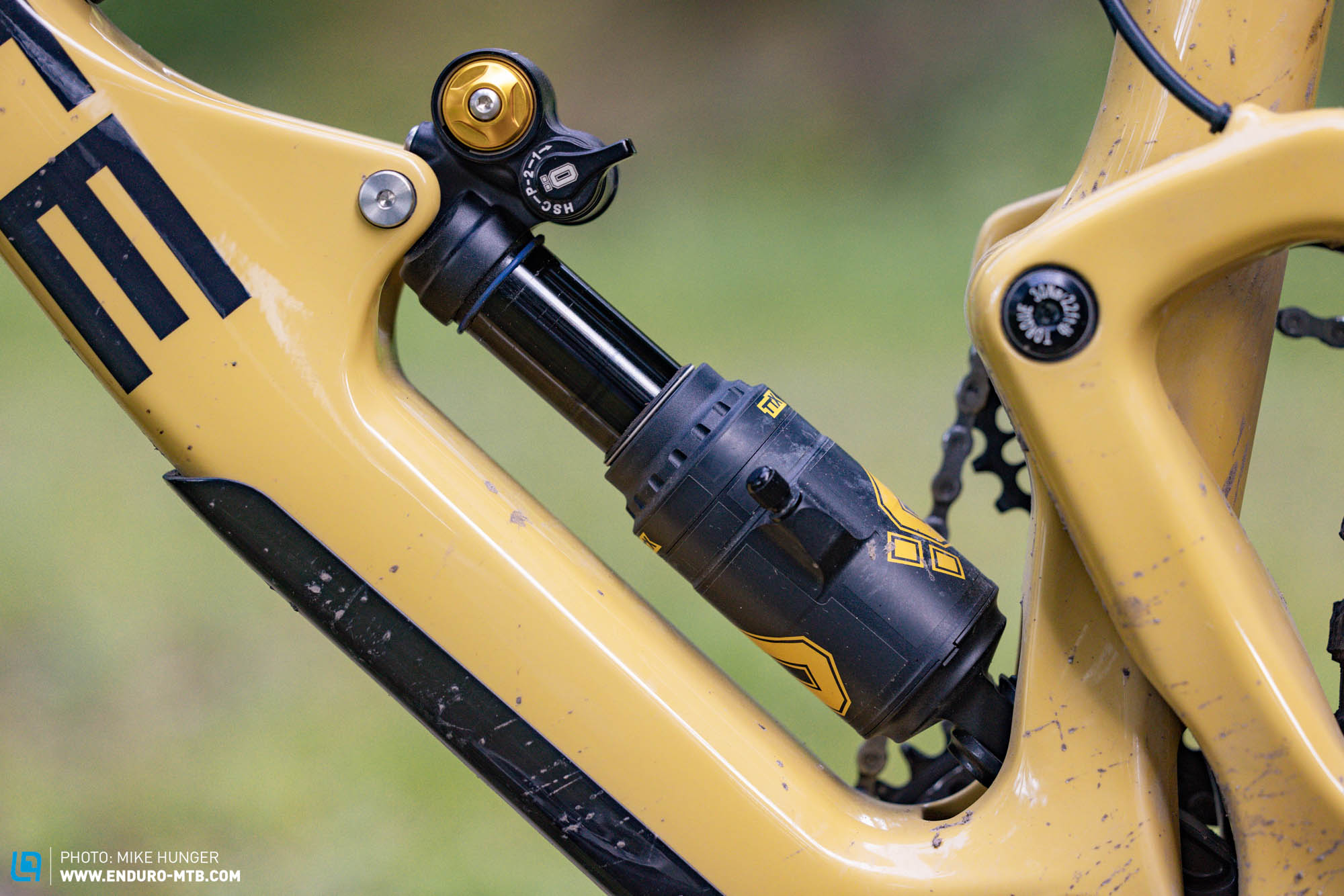
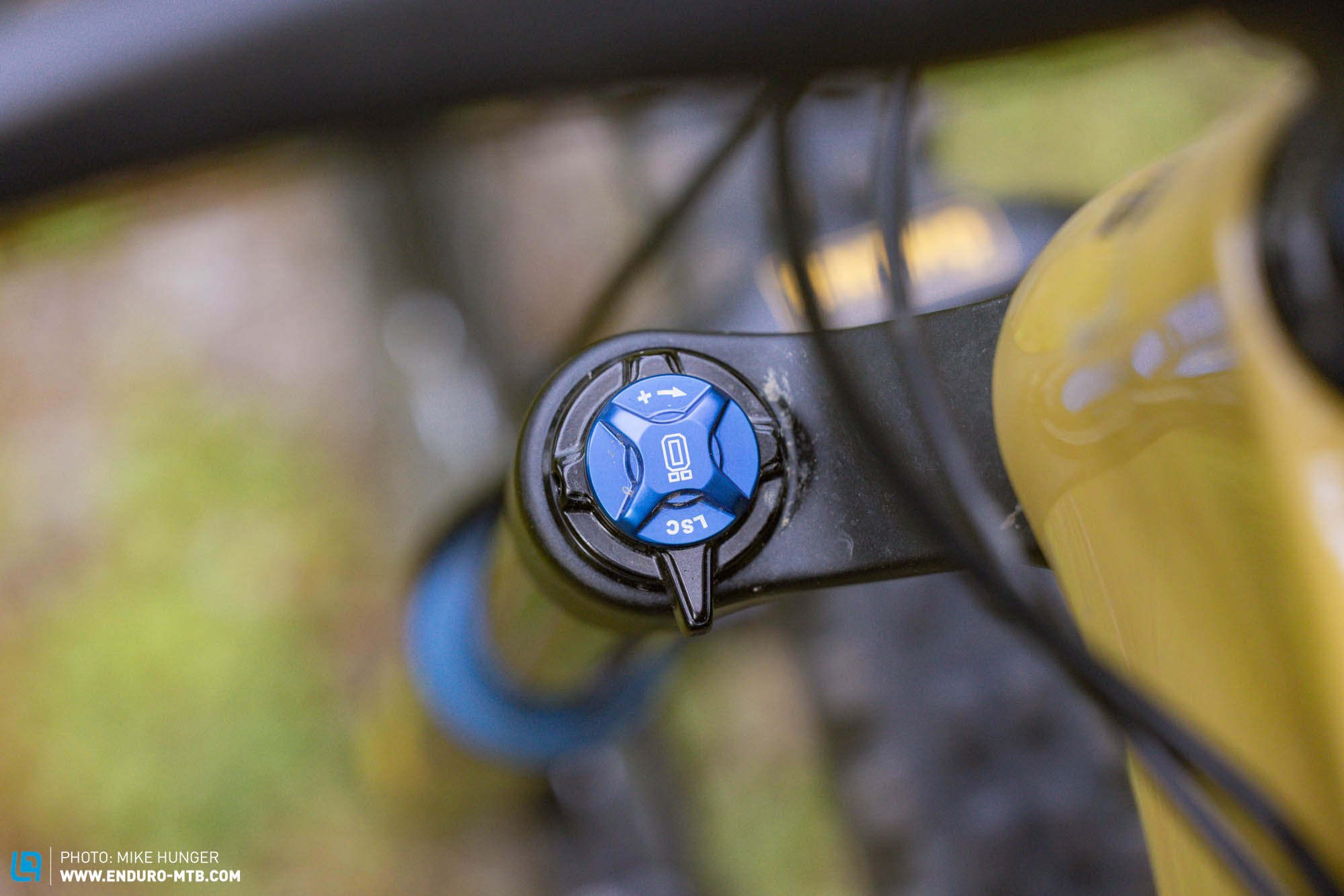
Japanese component giant Shimano supplies the XT drivetrain and matching four-piston XT brakes, which are paired with top-tier ICE-TECH rotors. However, no amount of ice will prevent the small 180 mm rear rotor from overheating on long descents, especially with heavy riders. Unfortunately, this results in a vague bite point and poor braking performance, which is why we recommend upgrading to a bigger 200 mm rotor at the rear – particularly if you’re planning on riding park on a regular basis. The XT shifter allows you to shift 2 gears at a time (both up and down), and also lets you upshift with your index finger – nice! Another cool detail is that the Highlander employs a standard 126 link chain despite the additional idler pulley.
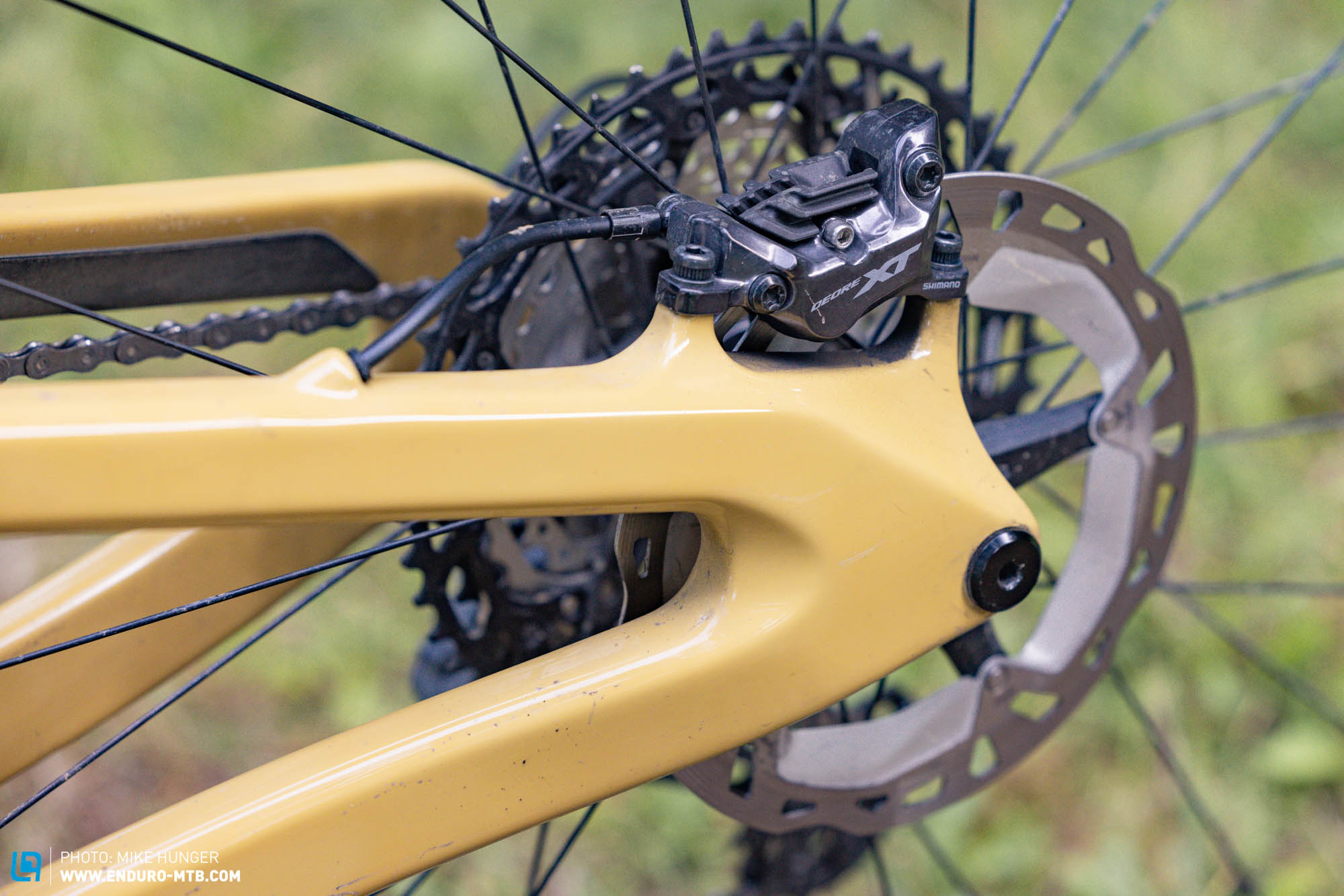
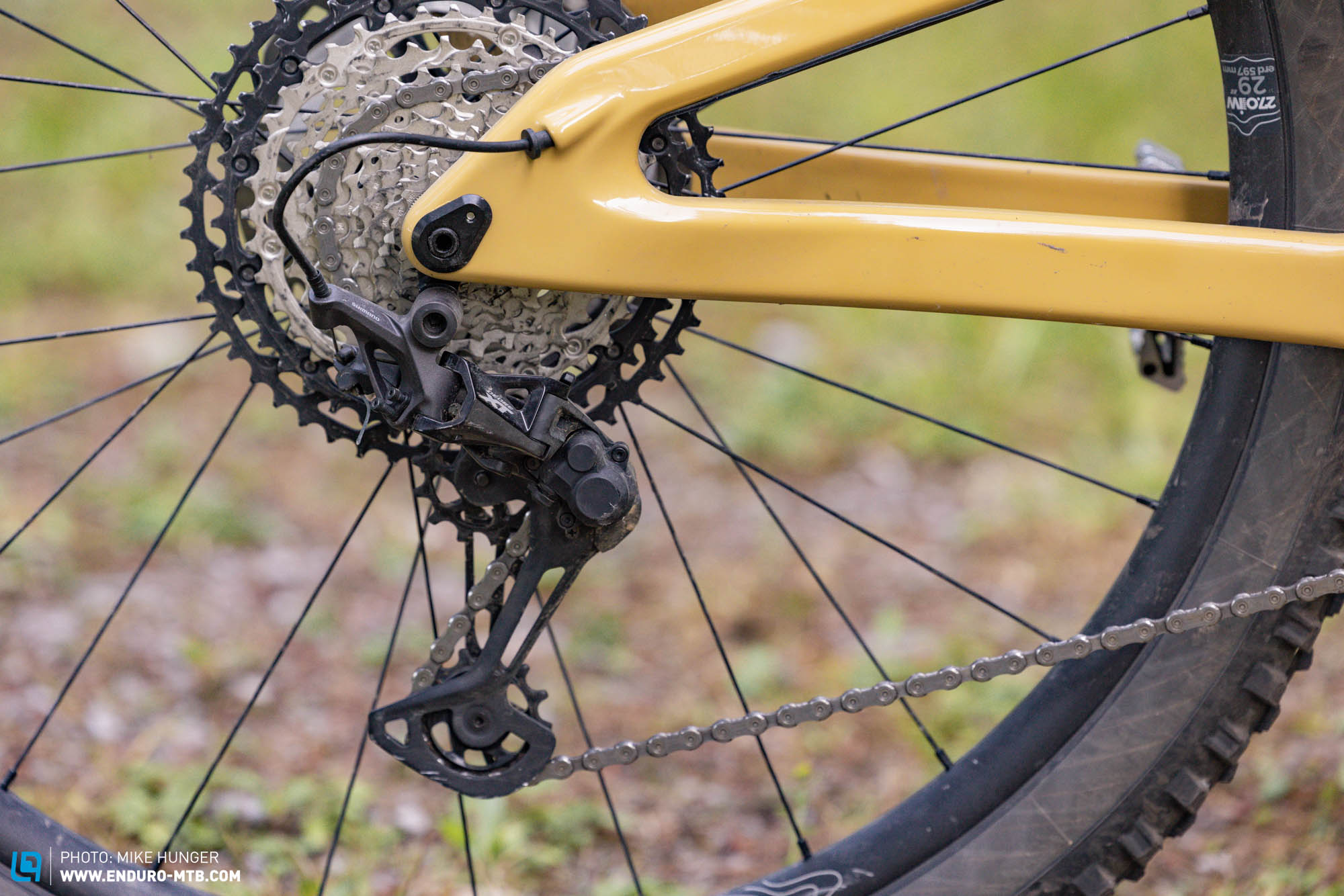
Canadian component brand OneUp provides both the long travel 210 mm dropper post and the cockpit, consisting of an alloy stem and carbon handlebars, which are supposed to dampen vibrations and reduce arm pump thanks to their oval shape. Bling wheel brand Industry Nine supply the wheelset, combining their popular Hydra hub with 0.52° engagement and aluminium rims, both of which are produced in North Carolina. The hub is famous for its unmistakable loud buzzing noise while freewheeling – you’ll have to decide whether you like it or not!
The Vittoria Mazza tires come in the thin Trail casing, which doesn’t do justice to the Highlander’s downhill potential. A tougher casing, like Vittoria’s Enduro variant, offers more puncture protection and allows you to run lower air pressures for more traction – our top tuning tip! Moreover, the tires feature the rather hard Graphene 2.0 rubber compound, which is comparable to MAXXIS’ MaxxTerra or Schwalbe’s Soft compound. If you tend to ride lots in wet conditions, we recommend upgrading to a tire with a softer rubber compound for more grip and control, especially at the front. At the rear, tire clearance is rather tight, (to the front, not to the side), which can cause mud to accumulate on the frame.
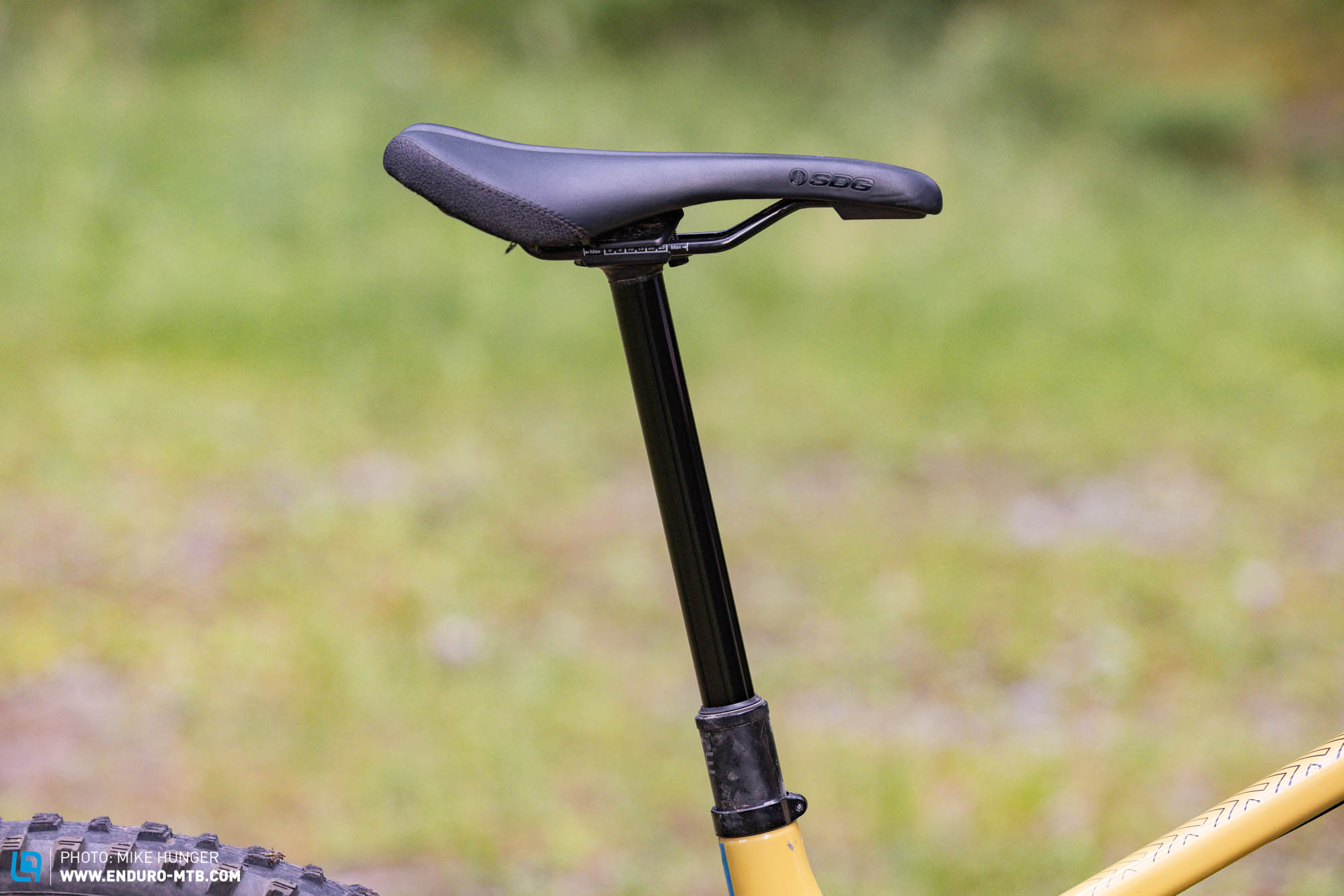


Deviate Highlander 2
Specifications
Fork Öhlins RXF 36 m.2 160 mm
Rear Shock Öhlins TTX2 Air 145 mm
Seatpost OneUp Components V2 210 mm
Brakes Shimano XT 200/180 mm
Drivetrain Shimano XT 1x12
Stem OneUp 42 mm
Handlebar OneUp Components Carbon Bar 800 mm
Wheelset Industry Nine Enduro S Alu 29"
Tires Vittoria Mazza Graphene 2.0 Trail/Vittoria Mazza Graphene 2.0 Trail 2.4"/2.4"
Technical Data
Size S M L XL
Specific Features
Two Toolmounts
online-configurator
The geometry of the 2023 Deviate Highlander 2
Although the new Deviate Highlander 2 is slightly slacker and longer than its predecessor, it’s still not too extreme. Unlike its predecessor, which was available only in three sizes (M to XL), the second-generation of the Highlander is available in four sizes, S to XL, though the smallest size S won’t be available until August 2023. Our test bike in size L combines 490 mm reach and a short 430 mm seat tube, which, together with the slammable dropper post, ensures plenty of freedom of movement on the bike. Chainstay length is 441 mm across the board.
| Size | S | M | L | XL |
|---|---|---|---|---|
| Seat Tube | 380 mm | 410 mm | 430 mm | 450 mm |
| Top Tube | 571 mm | 601 mm | 635 mm | 658 mm |
| Head Tube | 88 mm | 93 mm | 110 mm | 121 mm |
| Head Angle | 65° | 65° | 65° | 65° |
| Seat Angle | 77° | 77° | 77° | 77° |
| Chainstay | 441 mm | 441 mm | 441 mm | 441 mm |
| Wheelbase | 1.189 mm | 1.221 mm | 1.258 mm | 1.283 mm |
| Reach | 430 mm | 460 mm | 490 mm | 510 mm |
| Stack | 610 mm | 615 mm | 630 mm | 640 mm |
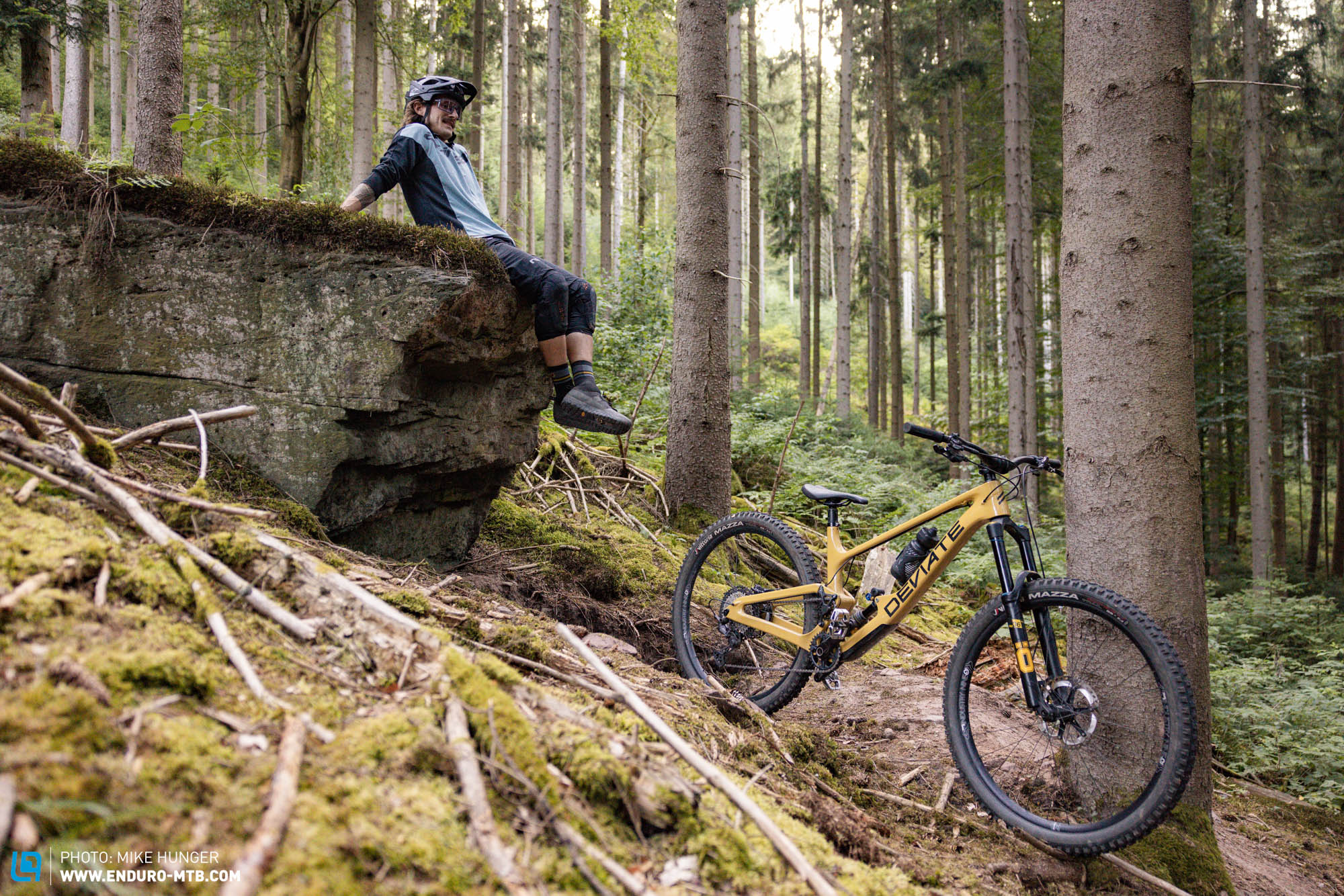
Level up – What’s the 2023 Deviate Highlander 2 capable of on the trail?
When testing the Highlander 2, we took Deviate’s “Any trail. Any time” claim extremely seriously, putting the bike through its paces on all sorts of terrain, from our long, techy home trails with nasty root carpets (and a few hairy sections) to DH race tracks and bike park lines.
Going uphill, the Highlander positions you far back above the rear wheel, ensuring a high level of comfort on level ground but requiring you to actively weight the front wheel on steeper climbs to stay on your line. The rear suspension always remains active while pedalling, providing good comfort over roots and potholes. On technical climbs, the rear end generates good traction and only develops minimal pedal bob – we never felt the need to reach for the climb switch, even on long, monotonous fire roads. The idler pulley works discreetly in the background, only making a faint clicking noise when pedalling in the lightest gear, and we didn’t notice any additional resistance when pedalling.
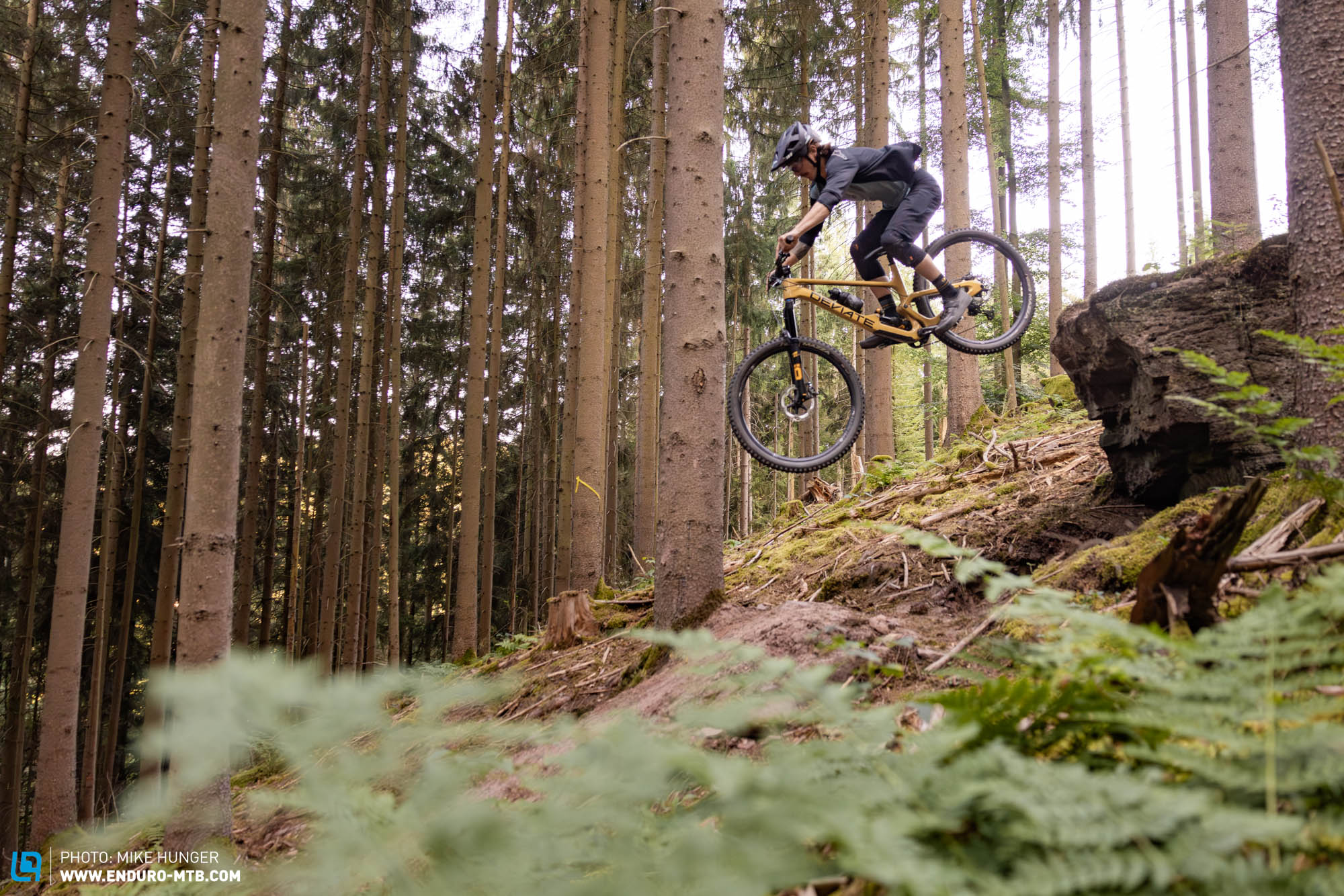

When gravity takes over and the fun part starts, the Highlander positions you centrally on the bike and makes you feel at ease from the get-go, implementing direction changes willingly and allowing you to flick it from one corner into the next rather effortlessly. The Deviate always feels predictable and never gets twitchy or nervous, doing exactly what you want it to do on the trail. Moreover, the nimble character allows you to spontaneously swap your line for a cheeky high-line. Unfortunately, there’s one thing that spoils the fun downhill: the noise. The Highlander is pretty loud, which is due on one hand to the cables rattling against each other and, on the other, due to a loud clunking noise in the bottom bracket area, which we haven’t been able to pinpoint yet. That said, the cable rattling in the cockpit area can be easily silenced with a bit of tape or some cable clips.
The rear suspension works sensitively and provides excellent small-bump compliance, allowing the rear wheel to follow the contours of the trail without you noticing smaller bumps. As a result, it generates excellent traction, inspiring huge amounts of confidence in slippery sections and nasty off-camber passages. At the same time, the suspension provides good mid-stroke support, allowing you to generate speed by pumping through rollers and flowing sections. With bigger hits, the Deviate still offers enough reserves and never blows through its travel abruptly. The front end, on the other hand, isn’t the grippiest out there, requiring you to actively weight the front wheel to keep it tracking, especially in open corners and on dusty, loose terrain, where the lack of traction robs you of confidence somewhat – a front tire with a softer rubber compound would help a lot here.

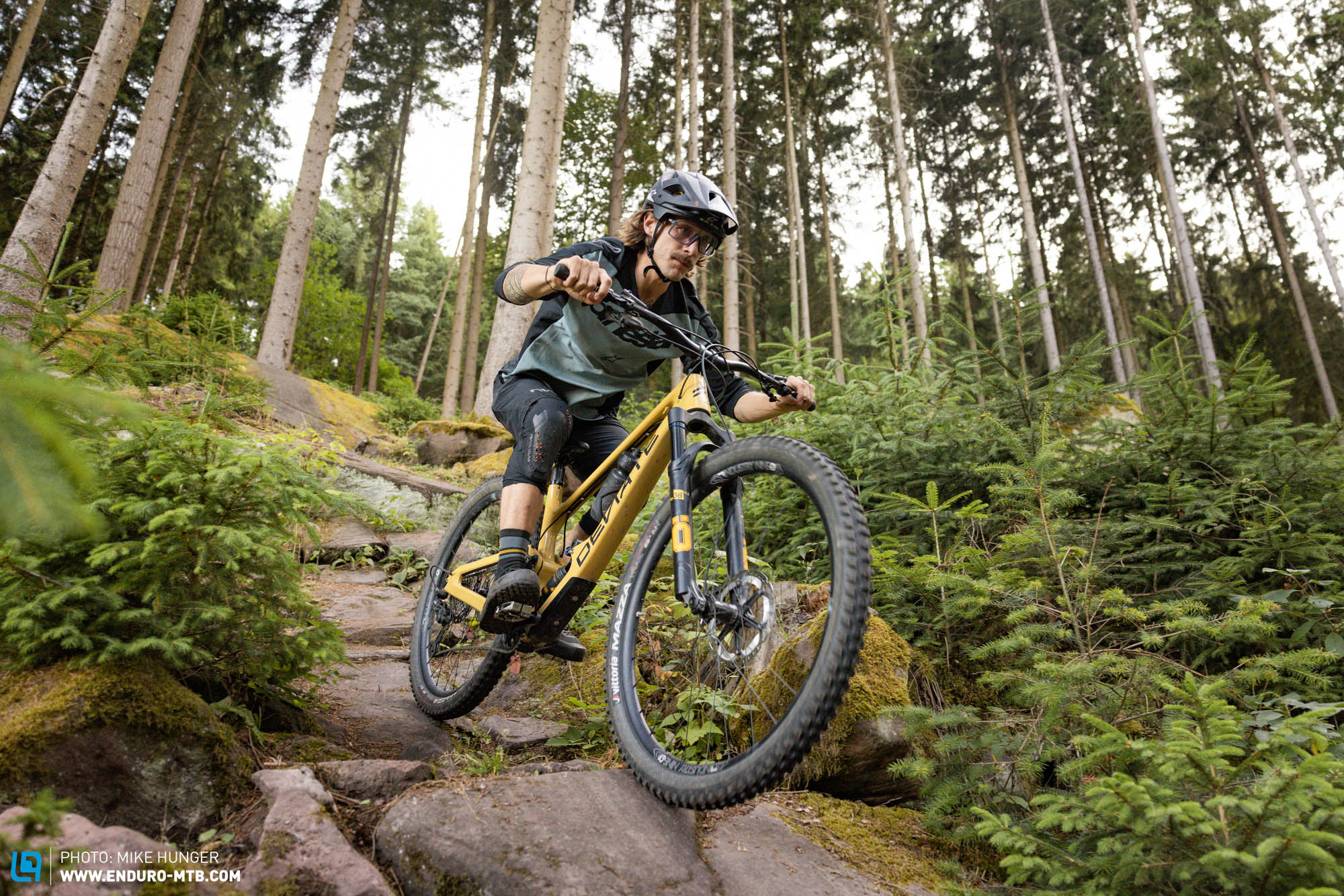
Despite the rear suspension’s sensitive response, the Highlander 2 provides defined feedback from the ground and always feels composed despite its meagre 145 mm of rear travel, delivering a smooth ride and clearly punching above its weight class. In tight berms, however, the growing rear centre makes it harder to push into the corner to generate speed and traction, though in return this offers an advantage in wider corners, where the elongated wheelbase inspires even more confidence and makes you feel as if you were glued to the ground, carving through curves as if you’re on rails.
Who should take a closer look at the 2023 Deviate Highlander 2?
The Deviate Highlander 2 is an exotic trail bruiser with a massive all-round potential. On one hand, you won’t be over-biked for most of your home trails and, on the other, you’ll be able to embark on rowdy trail sessions in bike parks or exotic trail destinations. Of course, the Deviate wasn’t designed as a park rig, but can easily keep up with burlier bikes with significantly more travel, even when the going gets rougher. Oh, and did we mention how beautiful it is?
Our conclusions about the 2023 Deviate Highlander 2
The Deviate Highlander 2 isn’t the two-wheeled reincarnation of Mel Gibson’s unruly barbarian, but rather a well-rounded “Scottish rose”. In our test, it delivered a tremendous performance in the most diverse scenarios, from our home trails to the occasional bike park expedition, providing direct, agile yet intuitive handling – although in open corners and steep climbs you’ll have to actively weight the front wheel to keep it tracking. The rear suspension of the Highlander 2 works sensitively, generating tons of traction while at same time providing plenty of support.
Tops
- Wide range of applications
- Sensitive rear suspension generates tons of grip
- Direct, agile handling
Flops
- Loud rattling noise
- Front end has to be actively loaded to generate traction in corners
For more information, visit deviatecycles.com.
Tuning tips: More robust tires with tougher casing and softer rubber compound at the front | Tape or clip the cables together in the cockpit area | Bigger brake rotor at the rear

